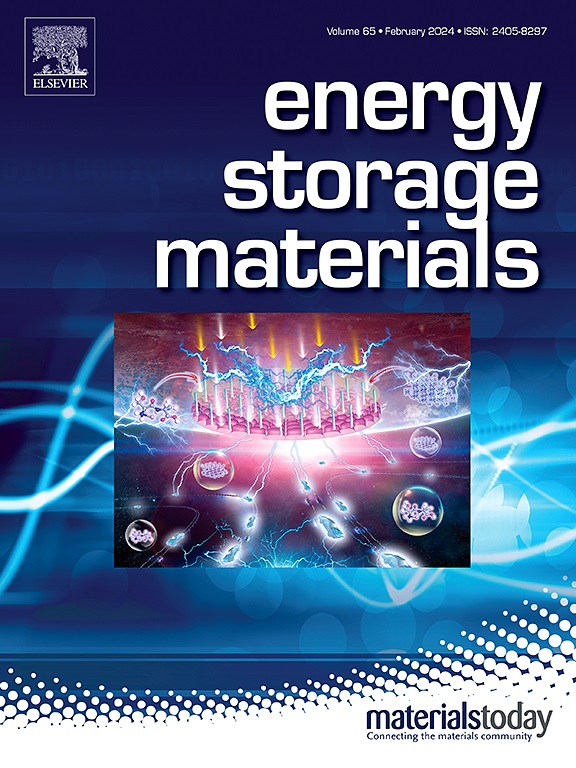High-stability zinc anodes modulated by solvation structure and interface chemistry toward printable zinc-ion capacitors
IF 18.9
1区 材料科学
Q1 CHEMISTRY, PHYSICAL
引用次数: 0
Abstract
Despite the well-known advantages of aqueous zinc-ion energy storage devices, their development is hindered by challenges such as zinc dendrite formation and side reactions. Moreover, reducing costs and improving efficiency are essential to achieving their commercialization. This study addresses the issues associated with conventional zinc sulfate electrolytes by introducing a safe and moderate concentration of glycerophosphocholine (G) as an additive. Experimental characterization and theoretical calculations show that additive G molecules regulate the solvation structure of zinc ions and modify the adsorption behavior of zinc metal at the electrolyte interface. This dual action suppresses the decomposition of active water molecules and guides the oriented deposition of zinc ions. From the perspective of practical application, high-performance zinc-ion hybrid capacitors are fabricated using fully printed electrodes via a cost-effective and scalable screen-printing method and possess a high capacity retention of 87.09 % after 6000 cycles. These devices demonstrate exceptional electrochemical performance and can accelerate the lab-to-fab translation process, showing great potential for commercialization.


求助全文
约1分钟内获得全文
求助全文
来源期刊

Energy Storage Materials
Materials Science-General Materials Science
CiteScore
33.00
自引率
5.90%
发文量
652
审稿时长
27 days
期刊介绍:
Energy Storage Materials is a global interdisciplinary journal dedicated to sharing scientific and technological advancements in materials and devices for advanced energy storage and related energy conversion, such as in metal-O2 batteries. The journal features comprehensive research articles, including full papers and short communications, as well as authoritative feature articles and reviews by leading experts in the field.
Energy Storage Materials covers a wide range of topics, including the synthesis, fabrication, structure, properties, performance, and technological applications of energy storage materials. Additionally, the journal explores strategies, policies, and developments in the field of energy storage materials and devices for sustainable energy.
Published papers are selected based on their scientific and technological significance, their ability to provide valuable new knowledge, and their relevance to the international research community.
 求助内容:
求助内容: 应助结果提醒方式:
应助结果提醒方式:


